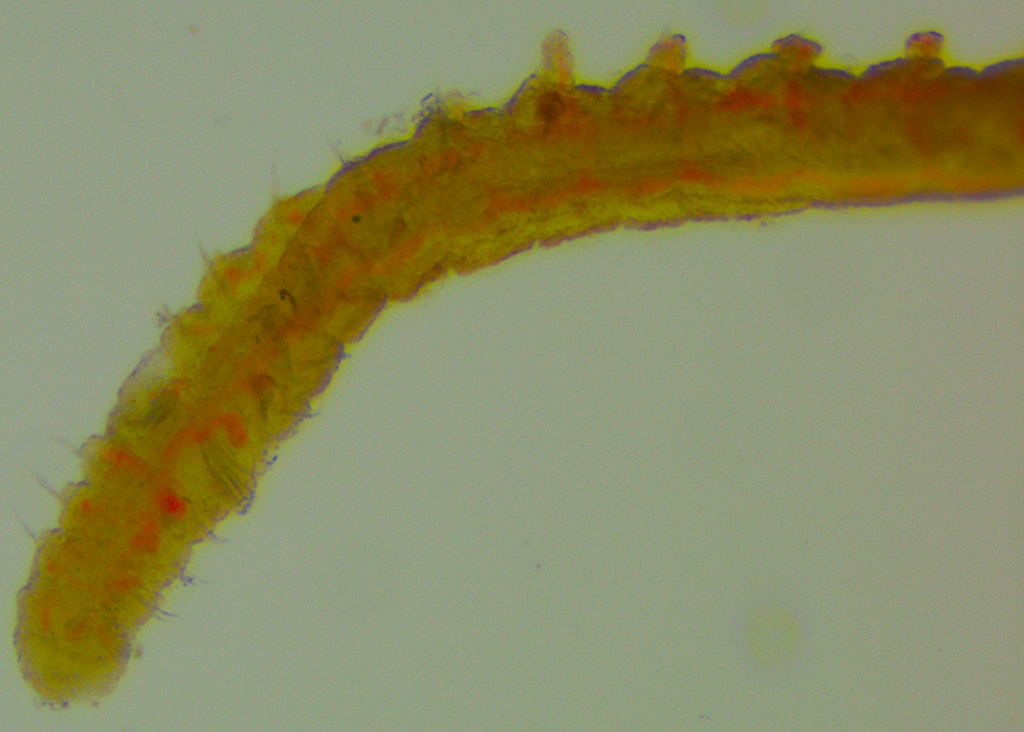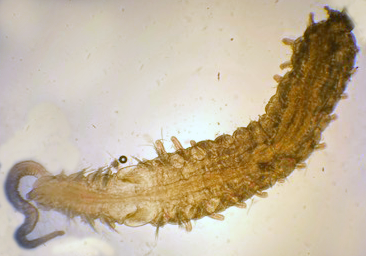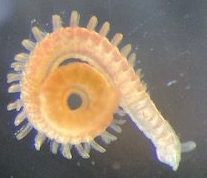This month, we will present to you the boring worms. These are worms of different genera, which belong to the polychaete family Spionidae. Polychaetes are also called bristle worms as the often have a large number (poly) of bristles (chaetae) on their segments. The family Spionidae is a family comprising more than 600 species in more than 40 genera. It is such one of the larger families in polychaetes. They are generally characterized by grooved palps, a caruncule on the head and chaeta which look hooks with hood over them. A caruncle is a dorsal extension of the head, which takes the form of an elevation or distinct crest separating the nuchal organs one from another. Nuchal organs are possibly olfactory organs of polychaetes. Moreover, the palps of spionids are easily lost when they get disturbeted. In Norway, more than 200000 records of 62 species in 16 genera can be found in ArtsKart. Hence, about one third of the global species and genera occur in Norway.

But what is so boring about these worms and why write a blog about them?
Several genera of the “polydorid” group such as Polydora or Dipolydora are quite boring as they bore holes in calcareous substrates such as the shells of mollusks, especially bivalves. Due to this they can have a substantial impact on for example mussels as they weaken the shell with the tubes they bore into them. This makes them more susceptible to harm by predators, disease and parasites. Additionally, this can cause so-called “mud blisters”. Mussels, oysters and such build additional shell material to protect themselves when the burrows get to close to the inner shell. Not surprisingly, this can also strong economic impacts on businesses like oyster farms and such. Accordingly, they are considered a pest and substantial research is conducted to investigate their life history, physiology and how their infection in farms can be prevented without harming the animals in farm itself.
As fun side note, for some bivalves, when a sand grain gets below the inner shell, these bivalves also generate additional shell material and encapsulated the sand grains. We appreciate this very much as we know these as pearls. Hence, in opposite to the “mud blisters”, this extra material increases the economic value.

How do they bore into the shells?
While spionids usually have the same set of chaetae at the anterior segments and all these segments look relatively alike, in these “polydorid” worms the fifth segment looks quite different. It is usually a bit larger and does not have gills, but most importantly it has a completely different set of chaetae. Together with acidic secretions, these stout chaetae are used to dig a burrow into the shell. Next the worm transports sand grains into the burrow to build an inner tube. The other spionid worms also usually build tubes and hence these boring worms kept this ancestral trait.
From these protected burrows, the worms then have a happy life with eating small particles using their palps either by picking them directly from the water or the surface surrounding the tube opening. The worms have usually two sexes and reproduce by releasing eggs and sperm to the environment. However, some Polydora species are hermaphrodites having both sexes in the same body.

We also found these spionids as part of our Artsdatabanken project “Biodiversity in the marine algae belt“. A focus of that project was also to map the diversity of spionids occurring kelp forests, sea grass meadows and red algae habitats. These habitats also often have different shells of dead bivalves and we also took samples from these. We could find different species such as Polydora onagawaensis, Polydora ciliata, Dipolydora giardi, and two possibly new species of Dipolydora. The shell-boring Polydora onagawensis is a species, which is new to Norway. It has been found in both protected and exposed kelp habitats in two localities of the Trondheim region. From the known records so far, it has boreal-arctic distribution with few records from the three continents. However, one record is from the White Sea. The type locality is in Japan and hence in the Pacific Ocean. The two new species are morphological similar to the genus Dipolydora. Both of them are genetically clearly different from Diploydora giardi, which we also found in our survey. For one of them, the genetic difference is at least 17.5%. It is associated with samples from kelp forests and occurs at one locality in the Trondheim region. The other new Dipolydora species is at least 20% genetically different. It occurs at sea grass meadows of one locality in the Trondheim region. Hence, the Trondheim region had been quite successful in finding new records of spionids for us.

![]()

1 Comment on “Group of the month: The boring worms”